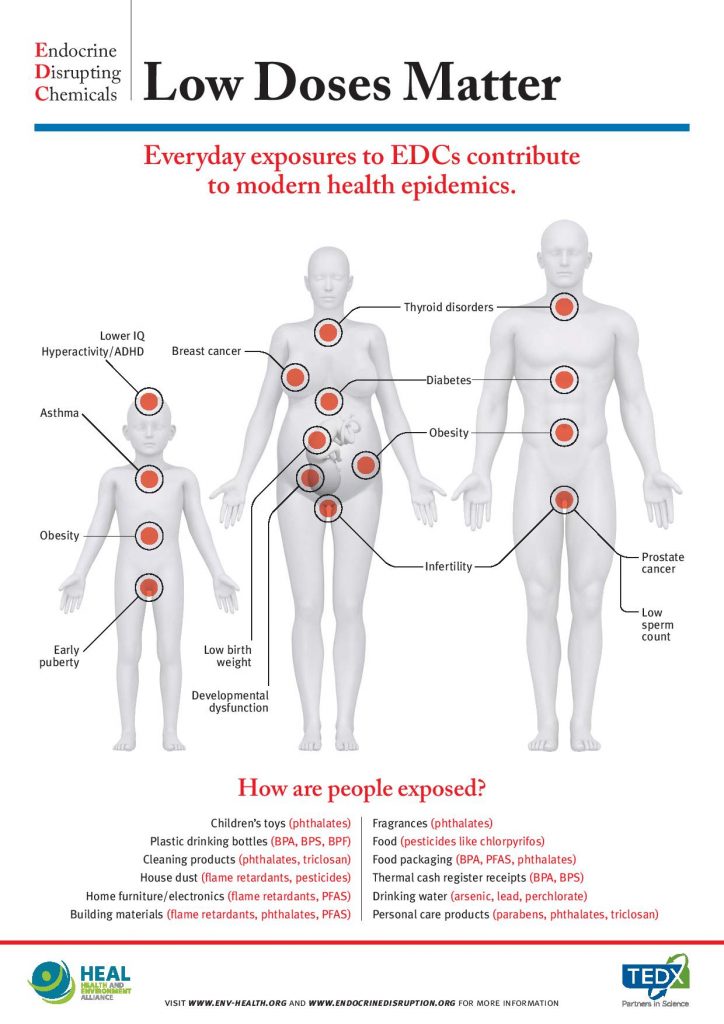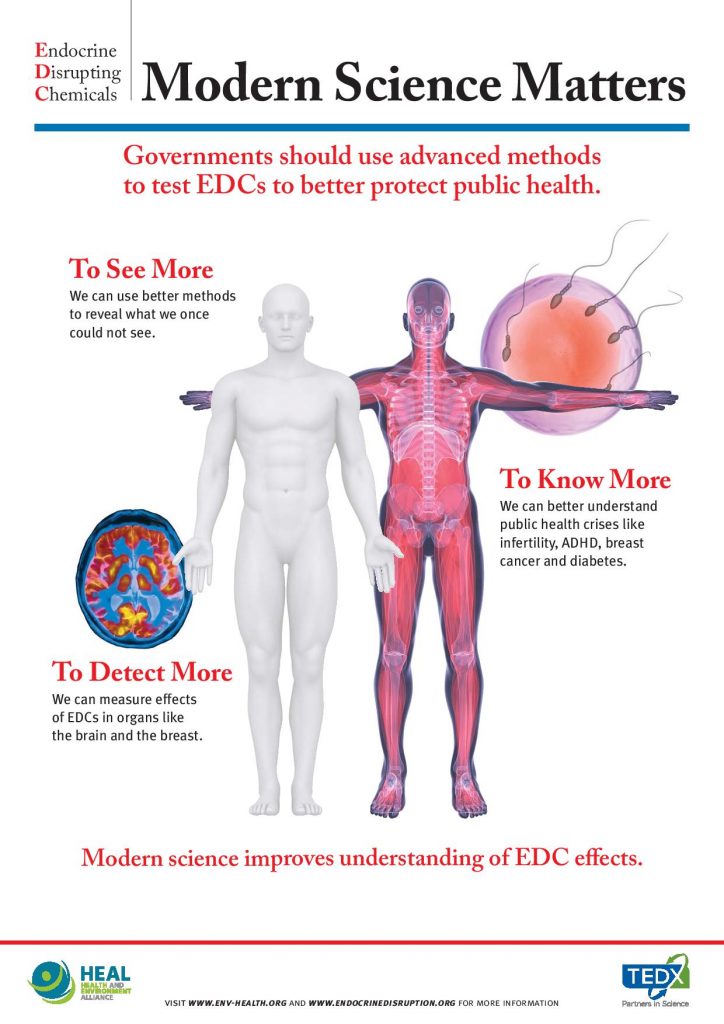For more information on environmental health, visit:
A picture says a thousand words. That’s why SCN, The Endocrine Disruption Exchange (TEDX), the Health and Environment Alliance (HEAL) and a team of science advisors in the U.S. and EU teamed up to visually communicate complex scientific concepts of endocrine disruptor science.
Low Doses Matter, the first in a series of three infographics, depicts the connection between exposure to low concentrations of common endocrine disruptors and modern health epidemics.

The latest, most accurate and predictive scientific methods to identify potential health threats from exposures to endocrine disruptors are available for use by government agencies regulating the use of EDCs. Unfortunately, many rely on outdated methods that assess changes in the weight of organs like the uterus, brain or liver, when more accurate scientific tests are available, such as measures of breast development, liver disease and brain function.
Our second infographic, created in partnership with TEDX, HEAL and a team of science advisors, depicts why Modern Science Matters.

These videos by Canadian Environmental Health Atlas explain some basics of environmental health science. The Canadian Environmental Health Atlas is a project initiated in 2009 by a multidisciplinary team of epidemiologists, a geographer and a demographer to advance knowledge on environmental health.
 Science Communication Network
Science Communication Network